yeovil at War
Francis Willoughby Loxton
Killed by an artillery shell near Ypres
Francis Willoughby Loxton was born in Lymington, Hampshire in 1883, the son of timber merchant Edgar Blake Loxton (1834-1920), originally from Andover, Hampshire, and Fanny Rebecca née Browne (1841-1895), originally from Ryde, Isle of Wight. In the 1891 Census Edgar and Fanny were living in Lymington with their children; Charles William (b 1873), Edgar (b 1874), Evelyn (b 1880) and Frankie, together with two servants.
By the time of the 1901 census 18-year-old Francis was a boarder living in Hornsey, Middlesex and working as an auctionéer's clerk. By 1911 Francis had moved to Yeovil and was a boarder at Hendford House (today's Manor Hotel) which, at this time, was a boarding house run by Edwin Brewser and his wife Marion. 28-year-old Francis listed his occupation as 'Estate Agent & Surveyor'. He was the manager of the Yeovil branch of Wilson & Gray, Auctioneers & Valuers, of 20 Princes Street.
On 19 August 1911, at the age of 28, Frances married Edith Stanhope Rowell (1883-1969), originally from Islington, London, at Haringey, Middlesex. They were to have one son, John Willoughby (1913-2004) and they lived at Morley House, West Hendford. As a sidenote, Edith later became a permanent resident of Tel Aviv, Israel, and later spent several years in Winnipeg, Canada, with her brother Reginald.
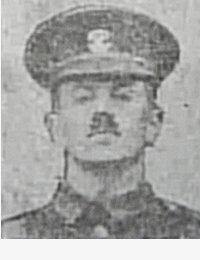 According to
the Western
Gazette's report
of Francis's
death, he was a
member of the
Yeovil Company
of the National
Reserve which
implies he
already had
military
experience prior
to the start of
the First World
War although I
could find no
detail of this.
According to
the Western
Gazette's report
of Francis's
death, he was a
member of the
Yeovil Company
of the National
Reserve which
implies he
already had
military
experience prior
to the start of
the First World
War although I
could find no
detail of this.
The fact that he very soon achieved the rank of Corporal is a further indication of previous military service.
Nevertheless Francis enlisted at Yeovil (albeit giving his address as Haringay) on the outbreak of war, joining the 6th Battalion, Somerset Light Infantry (Service No 3/7437). In fact he was almost certainly one of the men in the 'Straw Hat Brigade' in the first photograph below of the Yeovil Company of the National Reserve in the Borough, taken the day war was declared.
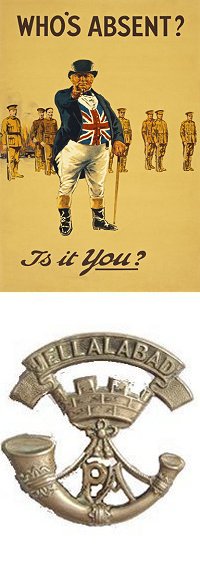 The 6th
Battalion had
been formed at
Taunton in
August 1914,
becoming part of
the 43rd
Brigade, 14th
Division at
Aldershot later
that year. On 21
May 1915 the 6th
Battalion landed
at Boulogne,
France.
The 6th
Battalion had
been formed at
Taunton in
August 1914,
becoming part of
the 43rd
Brigade, 14th
Division at
Aldershot later
that year. On 21
May 1915 the 6th
Battalion landed
at Boulogne,
France.
The Battalion spent the first week or so marching across France towards Belgium where they spent about a week supplying working parties for the digging of trenches for a secondary positions southwest of Ypres. By Sunday 13 June the Battalion settled down to trench life and the Regimental History of the Somerset Light Infantry recalled for that day "The trench life was very quiet. A little shelling early in the morning and desultory rifle fire during the day.... The trenches taken over were situated in a dangerous position. They had been captured from the enemy only a few days previously I had occupied the most easterly point of the British position in Belgium, in front of Hooge. The line generally was in a very bad state and under incessant shellfire from the North, East and South. From 30 June to 18 July the 6th Somersets remained in billets, supplying large working parties day and night."
On 26 July 1915, while at Hooge, the Battalion was subjected to a new weapon of war - the flamethrower. This event is described in the Regimental History of the Somerset Light Infantry "Very early in the morning the front-line trenches of the Brigade were suddenly flooded by liquid fire, which belched from jets in the German lines opposite. This new device momentarily caused surprise and confusion, and the victims of this dastardly attack fell back from the front-line trenches which were then occupied by the enemy."
|
A letter published in the Western Gazette, 23 July 1915 Corporal FW Loxton of the 6th Somerset Light Infantry, who was the manager of Messrs Wilson & Gray's Yeovil Branch and joined the battalion as a member of the Yeovil Company of the National Reserve, has written an interesting letter to a friend in Yeovil. In it he describes the comparison of being all 'wait' and no 'see'. He goes on " I use the last word advisedly, as though we have had a fairly good example of what the German artillery can do when it doesn't suit ours to reply, and though I have worked at filling sandbags within 20 yards of their trenches, and I have not yet seen a German. The feature which impresses itself on me is that our own artillery never waste a shell. Sometimes there is a burst of firing with a definite object, such as smashing up a redoubt or firing at a sniper or machine gun station but never a purposeless shell, whereas the Germans will blaze away hundreds of shells without any apparent object, unless it be to get a stray casualty now and again. They must have fired 1,000 shells a day on average at or near our trenches during the five days we were there; a large percentage were 'dud' ones. The vast bulk of what they let us have were high explosive which make a deafening noise on bursting and give a lot of work in repairing parapets of trenches but don't cause many casualties if they don't land on anything hard. One shell landing on a hoarding road caused eight casualties, including one Sergeant-Major killed and two officers wounded, whereas in the nearby trenches where most of the Yeovil boys were, nearly all the time we had more shells than anywhere else, but a few casualties, because all they did in most cases was to raise a volley of dirt and leave a big hole in the soft sandy soil. I had a splinter of shell through my coat collar and was knocked down by the concussion of another but came out of the trenches as fit as I have ever been barring a frightful thirst."
from
"Letters
home to
Yeovil
in the
Great
War,
1914 –
1919"
by Jack
Sweet |
The rest of July and August passed in day-to-day trench warfare with, as the Regimental History points out "Two days in and two days out of the front line was the rule at this period, but between the miserable conditions of the billets and the filthy state of the trenches there was little choice." Sadly, while sleeping in his trench dug-out, Francis was killed by an artillery shell on 11 August 1915. He was aged 32.
On 20 August 1915, the Western Gazette reported "News has been received of the death of Corporal Loxton, who is the first member of the Yeovil Company of the National Reserve who is at present known to have lost his life on active service. Deceased was the manager of the Yeovil branch of Messrs. Wilson and Gray (Auctionéers, Valuers etc 20 Princes Street) and threw up his post when the call came. He was well known and popular amongst a large circle of friends, and the greatest sympathy is expressed with his widow (who is left with an infant son) and his father (Mr Edgar Loxton, of Trafalgar House, South Street, Lymington.) and other members of the family. In a letter received from a comrade it is stated that Corporal Loxton was asleep in a dug-out when a shell pitched near and exploded causing his death. An older brother of the deceased is serving in India with the Hampshire Territorials."
Francis Loxton was interred in Bedford House Cemetery, West-Vlaanderen, Belgium, (Grave No.2 II.A.18), and his name is recorded on the War Memorial in the Borough.
gallery
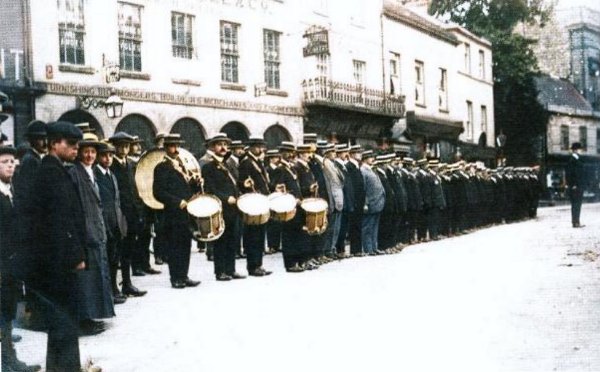
On Bank Holiday Monday, 4 August 1914, Yeovil men of 'E' (Yeovil) Company, 1st (West) Somerset Battalion of the National Reservists, known colloquially as the 'Straw Hat Brigade', line up in the Borough before marching to the Town Railway Station and travelling to Taunton. War was declared at midnight. Francis is almost certainly in this photograph.
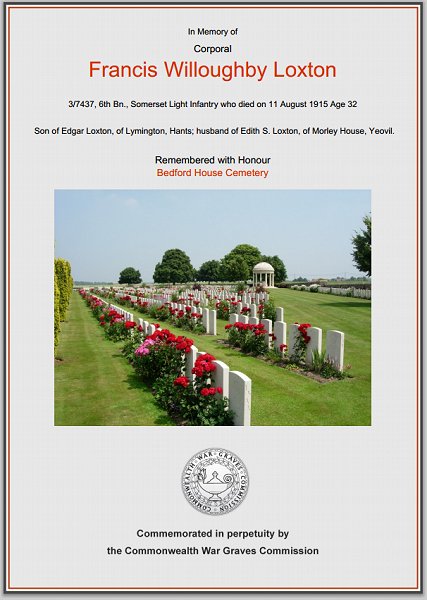
The Commonwealth War Graves Commission certificate in memory of Francis Loxton.
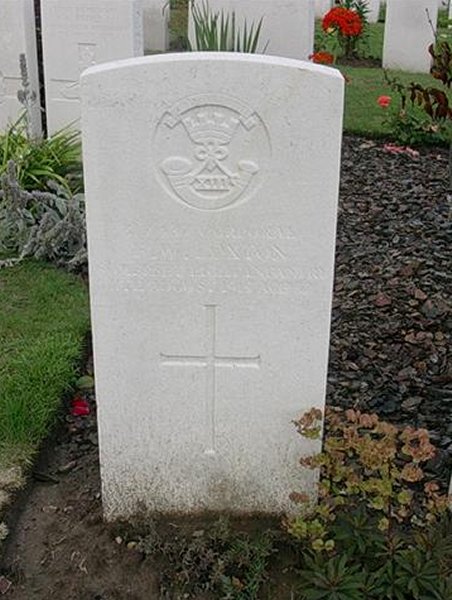
Francis Loxton's headstone.